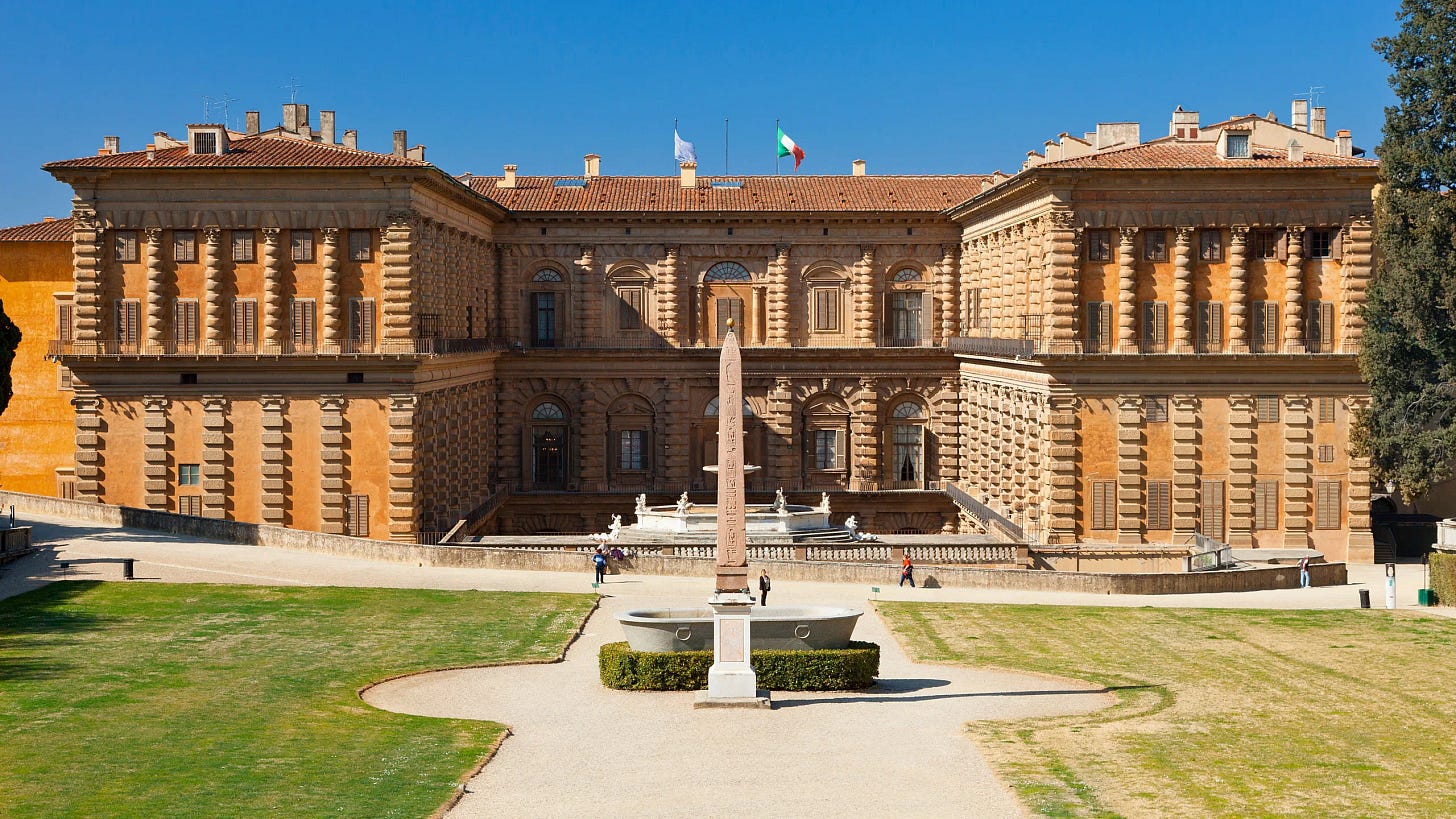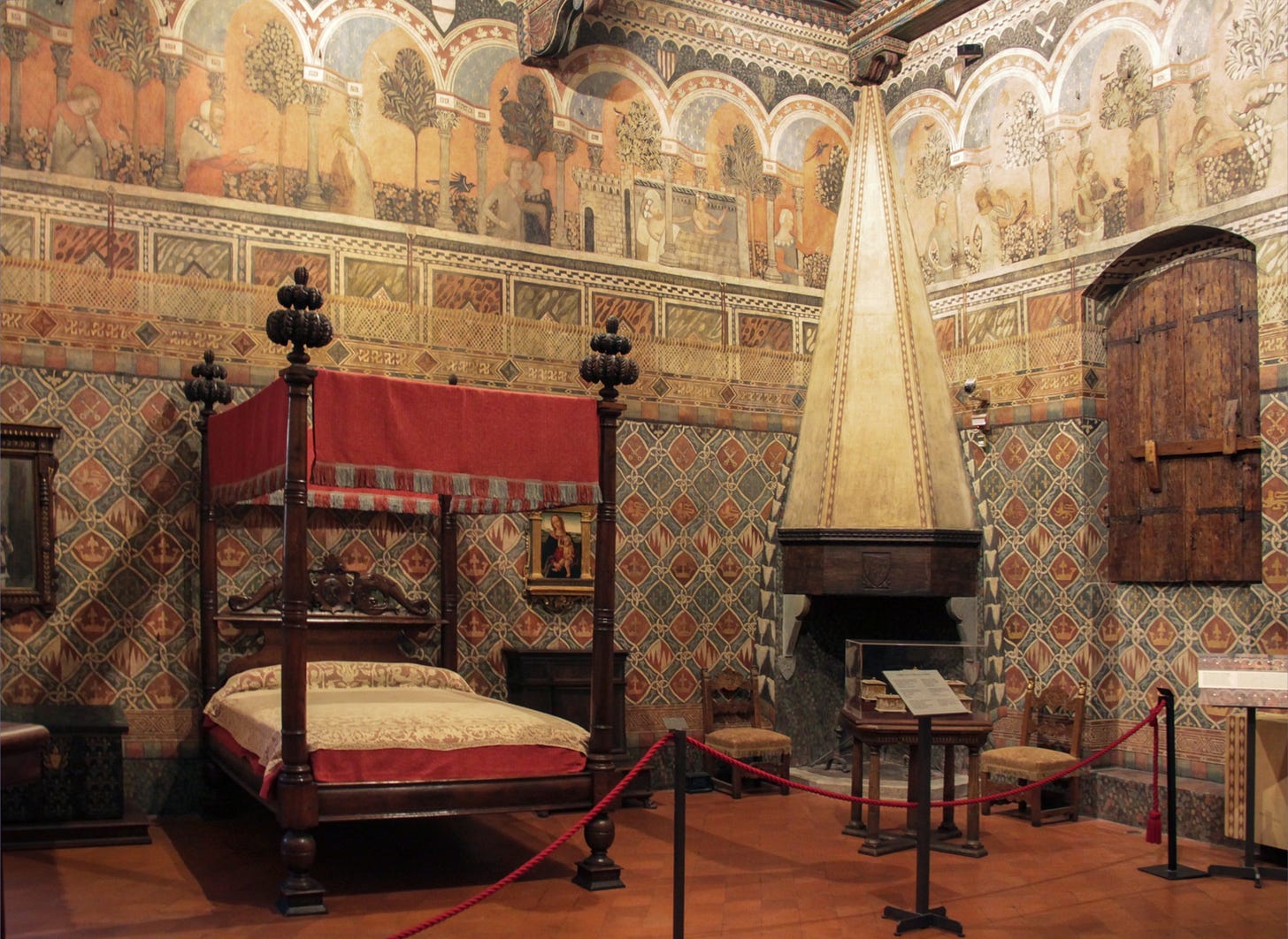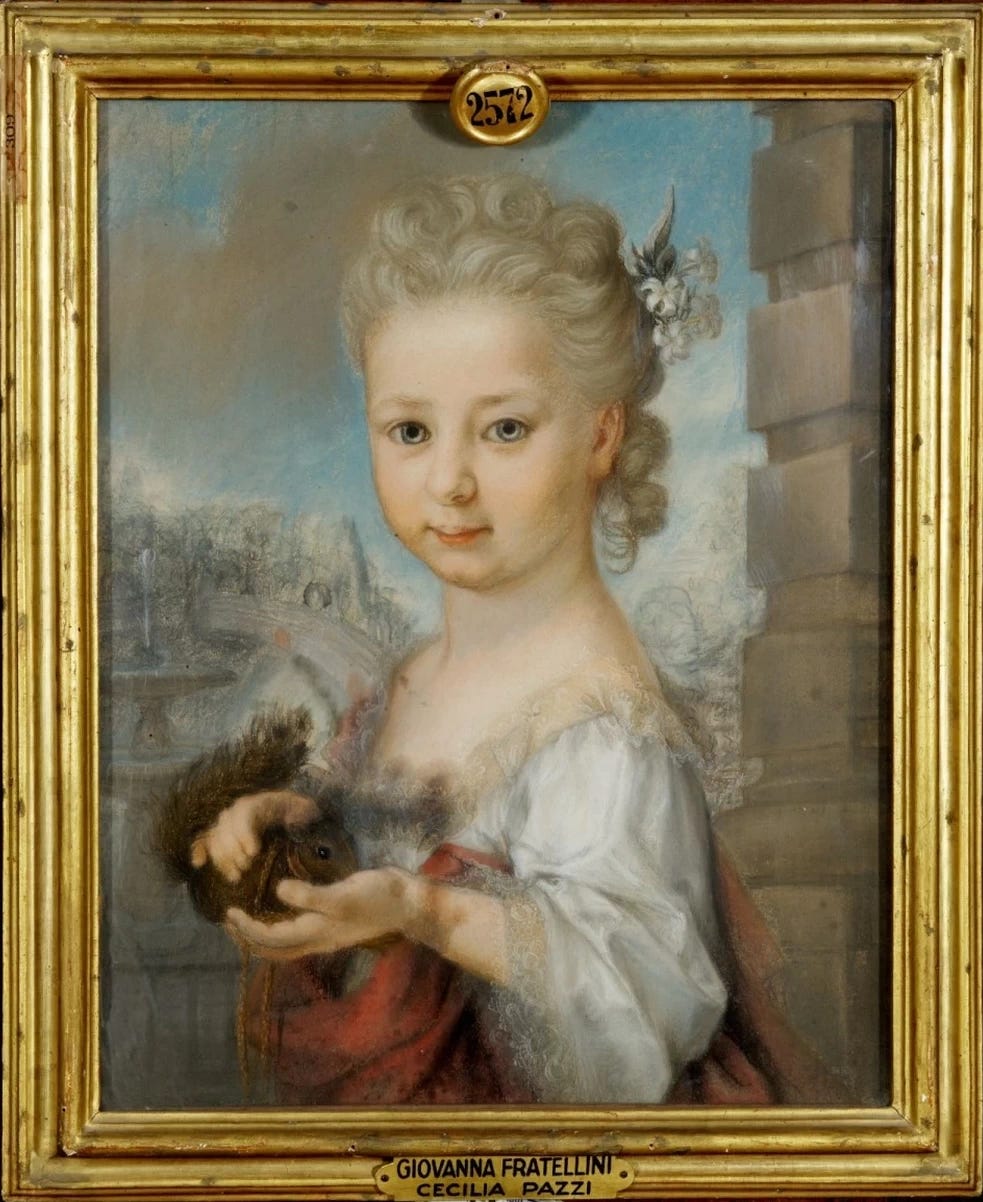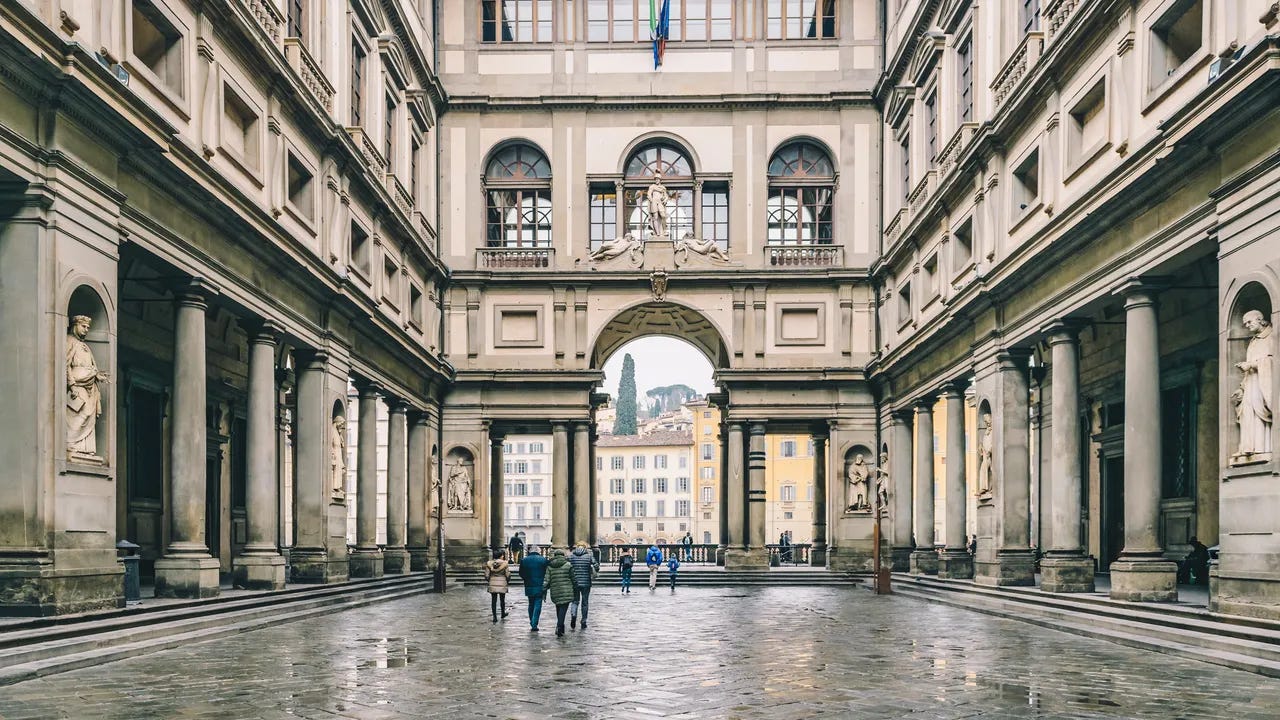Art in Cities: Florence
The best art to see; plus where to eat, what to do, and what to read.
Art Lovers! Welcome to the second instalment of Art in Cities where I share my top tips for finding the best art in cities – plus, where to eat, what to do, and the books to read to get you in the mood.
Last month, I shared my guide to Mexico City. This month, I bring you Florence – a dream destination that features everything from the best Artemisia Gentileschi and Lavinia Fontana paintings to the most decadent shell grottos, and more!
This article is divided into 5 Parts: (1) Museums; (2) Churches; (3) Food; (4) Don’t miss; (5) Books. Enjoy!
1. Museums
Pitti Palace:
This should be your first port of call. The Pitti Palace is home to over 500 paintings. And, if you look closely, you will find a plethora of works by women artists adorning the walls. These include Artemisia Gentileschi’s Penitent Magdalene (1616–1618; left, below) and her Judith and her Maidservant (c.1615; right, below). Get ready by listening to Letizia Treves discussing Gentileschi on the GWA Podcast.
In the Pitti’s Museum of Costume and Fashion there are other examples of female creativity, such as dresses by Rosa Genoni (1867–1954) who, by imbuing her garment with a history of Italian art, sought to reinvent Italian costume. The dress below is called “Spring” and took inspiration from Flora’s dress in Botticelli’s Allegory of Spring (1477-1482). Genoni also founded and directed the dressmaking department at the Professional School for Women at the Società Umanitaria in Milan.
Museo di Palazzo Davanzati:
This museum was once the home of the Davanzati Family, a prominent Florentine dynasty. The house is preserved as it would have been, complete with pottery, beds and a kitchen. I like to think of it as Florentine Charleston!
There are also large displays of handmade lace. In 1977, the director Maria Fossi Todorow started the department for exhibiting and conserving lace – an important archive of female creativity in a very patriarchal city. There are also displays of women's clothing, household linen, and children’s clothing from the 19th and 20th centuries, many of which were produced by women-led workshops.
At Davanzati, you can also see paintings by women, such as Giovanna Fratellini’s (1666–1731) Portrait of Cecilia Pazzi as a Child (1717–1731).
Galleria degli Uffizi:
Where to begin? The Uffizi is a must. They have everything from Roman sculpture to early renaissance altarpieces, and even a few works by women. Here, you can find my favourite work by Artemisia Gentileschi: Judith Beheading Holofernes (1620-21).
Keep reading with a 7-day free trial
Subscribe to The Great Women Artists to keep reading this post and get 7 days of free access to the full post archives.













